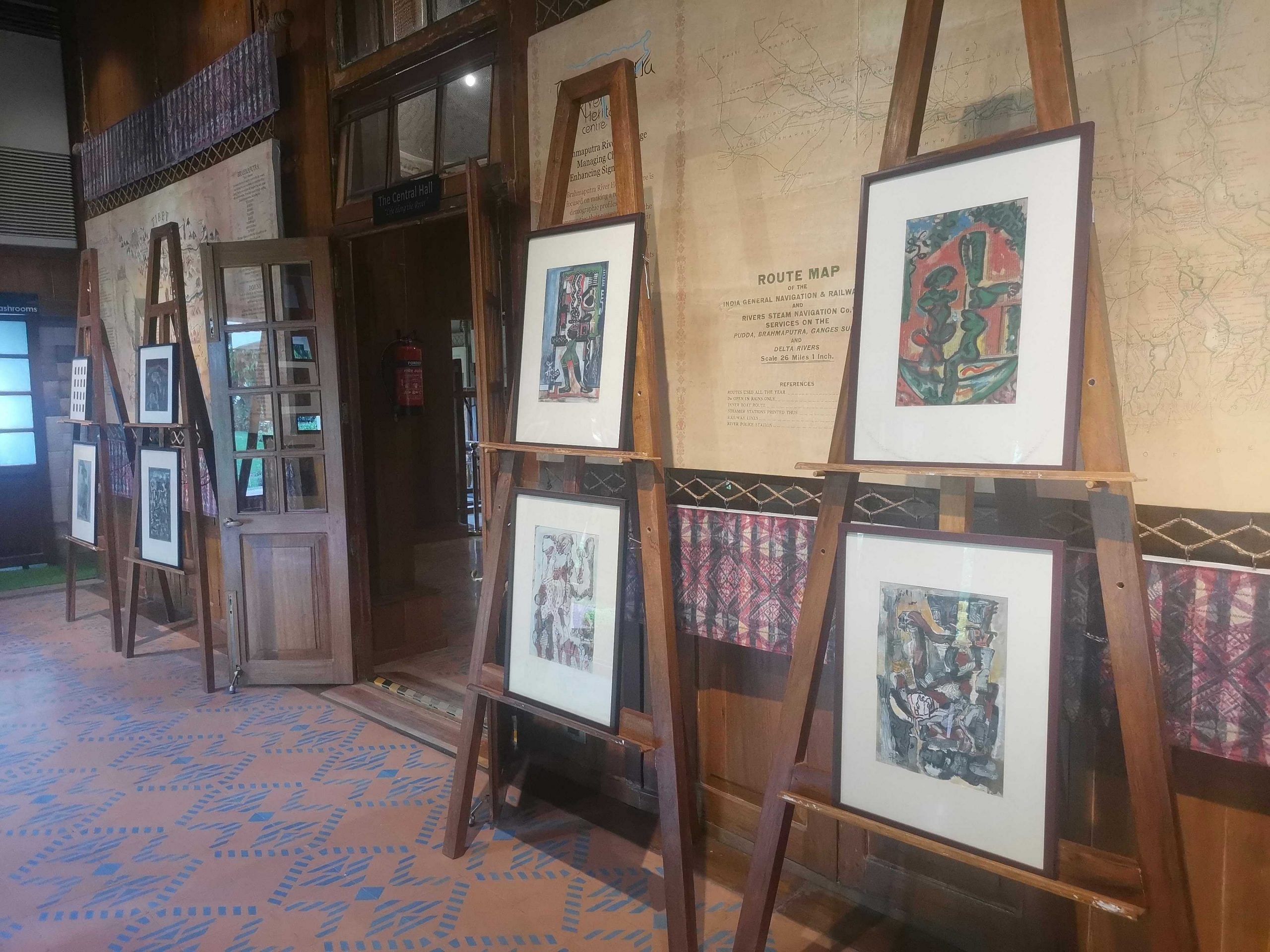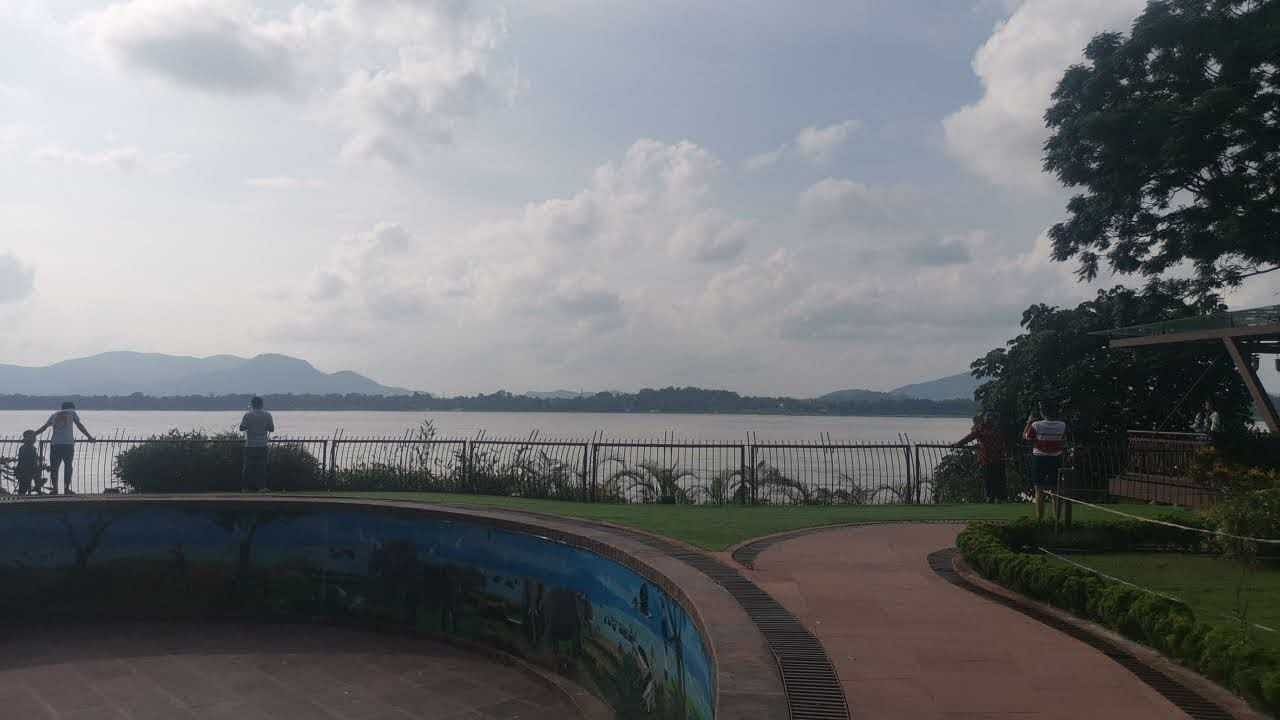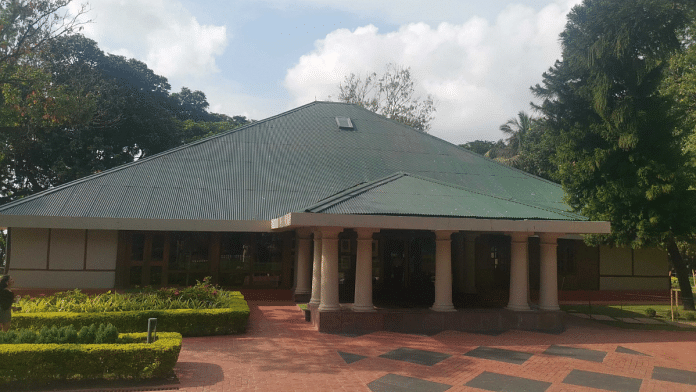Guwahati: From monthly exhibitions of Assam’s contemporary artists to a Bangladeshi film festival — the Mahabahu Brahmaputra River Heritage Center has become Guwahati’s new cultural hub.
Known as the city’s iconic 19th-century ‘DC Bungalow’, the cultural centre, which opened last October, is perched on a hill dividing the Brahmaputra riverfront from the hustle and bustle of the city’s Pan Bazaar area. Its very location has cleaved the city into old and new notions of what constitutes public space.
Before the centre came about, there was a missing link in Guwahati’s relationship with contemporary art. The grand old Assam State Museum was just that — old and intensely scholarly. Now, for the first time, paintings by artists like Neel Pawan Baruah, Pulak Gogoi, and Champak Barbara have found a home, though temporarily, by the promenade.
“It’s opening up a closeted space like the DC Bungalow in a democratic way; people can go up the hill and view the Brahmaputra without taking any permission,” said Avinibesh Sharma of Vintage Assam, a website that has been documenting the state’s history. He adds, “It has been a place for addas, soirees, and a very active cultural space.”
First in Guwahati’s beautification
The Mahabahu Brahmaputra River Heritage Center has gone by many names, including DC Bungalow, Bentick’s Bungalow, and Burra Sahib Bungalow.
But long before the British started constructing these ‘Assam-type bungalows’ in and around Pan Bazaar, Fancy Bazaar, and Uzaan areas of the city, earlier known as ‘The European Ward’, and the hillock had served as a strategic point for the Ahoms.
The hillock was named Borphukan Tilla after the Ahom general Lachit Borphukan who placed cannons at the spot during the Battle of Saraighat (1671) against the Mughals.
“It was a Scottish-type bungalow…that provided sufficient space for throwing a ball dance party,” writes Dipankar Banerjee in his 2004 book Heritage Guwahati.
In 2012, the Guwahati Metropolitan Development Authority (GMDA) took up the project to restore the bungalow. The Assam government has been beautifying the 6-km riverfront stretch as a part of Brahmaputra Riverfront Development Project . “It was a very small house. When I joined last year, I was just given three months to turn it around,” says Kausar Hilaly, Chief Executive Officer of the GMDA.
“[We thought that] this would essentially be a place where people would come and look at the colonial structure, and there would also be this open space to enjoy and have access to the river,” he adds. Between July and October last year, Hilaly led a team of engineers, artists, sculptors, and curators to come up with the Heritage Center.
It was finally inaugurated on 3 October 2021.
And newspaper headlines followed: ‘Over 150 years later, Guwahati’s British-era DC Bungalow is now a heritage centre (Hindustan Times), A British-era bungalow now resonates life and culture along Brahmaputra river in Assam (Deccan Herald), and Heritage bungalow of Ahom rulers turns into tourist magnet (The Times of India).
“It always had a very special place in Guwahati and otherwise. Now that it has been converted, which is a rarity in Assam, old places are more or less demolished and done away with,” says Assamese actor Kopil Bora.
The Heritage Center receives around 600 to 800 visitors on weekdays. The count goes up to 1,500 on weekends.
When asked about the success of the Heritage Centre, Hilaly says, “Since we opened in October last year, we have earned about Rs 1.5 crore, which comes to about Rs 16 to 18 lakh a month. This is significant.”
Also read: Auroville is having a Crown headache — The laboratory of evolution is divided
Breaking academic shackles
An arrangement of paintings is lined up in the lobby of the Heritage Center. The artist on display in July was renowned Guwahati-based painter Neel Pawan Baruah. Baruah’s abstract figures, a confusing amalgamation of modernity and nature, were a riot of colours in the neatly placed frames.
From the ‘art gallery’ lobby, visitors are led to enter the Central Hall, which depicts ‘Life Along the River’ with wall hangings comprising fishing equipment and a boat installation on the ceiling by artist Jyoti Sankar Bhattacharya.

The river remains the central theme throughout, and even the adjacent ‘Viewing Room’ includes important textiles made by communities that have settled by the Brahmaputra.
“We started working a lot with the motifs and collecting all these pieces…[We wanted to show how] the Brahmaputra is such an important river and these communities live around that,” says fashion designer Ishita Das who curated the ‘Viewing Room’.
Then comes the Library Hall and its archive of vintage photos of important historical moments, a curation by Avinibesh Sharma.
The crowning jewel of the Center, as Shahnaab Alam, an artistic consultant involved in the project would describe it, is the collection of musical instruments in the attic space curated by Shilpika Bordoloi of the Brahmaputra Cultural Foundation, a not-for-profit organisation that aims to “preserve, and promote cultural traditions, practices of Northeast India.”
The Center, with its cultural curios from colonial, postcolonial, and modern times, has renewed cultural conversations.
“The decision was to not make it a museum. A museum is a very serious work; it requires years of research. This is an artistic representation of what cultural heritage is,” says Alam.
Despite housing a collection of exhibits from Assam’s history, the Heritage Center is starkly different from the Assam State Museum, which is just 1.5 kilometres away.
The three-storeyed State Museum consists of various rooms displaying historical artefacts from 700 CE to depictions of the “Village Life of Assam”.
“The State Museum is absolutely academic, where you go and study and everything. The Center has those traits, but the exhibits aren’t as intensive,” Bora says. “The traditions, the photographs, and the books are there but are on a smaller scale. Whatever it might be, history has been preserved here, which is the most important.”
Also read: Vistadome train from Guwahati to Haflong is the new go-to destination in Assam
‘Not a museum’
Surrounding the Heritage Center is the promenade, parts of which have been converted into a children’s zone consisting a life-sized chessboard, a Snakes and Ladders board on the ground, and a collection of Hansel and Gretel-style small houses. Visitors make their way to catch the sunset from the gazebos that overlook the river.

In a way, the centre has reinvigorated the city’s relationship with the river. “The river is available to us in every nook and corner in this city; people can go and have access to the river. But here, in the premises to the bungalow, it is a different experience altogether,” says Bora.
Trisha Jalan, a long-time resident of Guwahati, says the centre essentially gives public access to the river. “There was an intention to make a promenade overlooking the river at Fancy Bazaar, but it’s now in a state of disuse. Then you have the Shraddhanjali Kanan, Bellevue Hill, and Nehru Park (which has been closed for some time now). But there are really no other public spaces like this Center that give you a view of the river, though it cost you Rs 100 to enter,” she says.
(Edited by Humra Laeeq)



